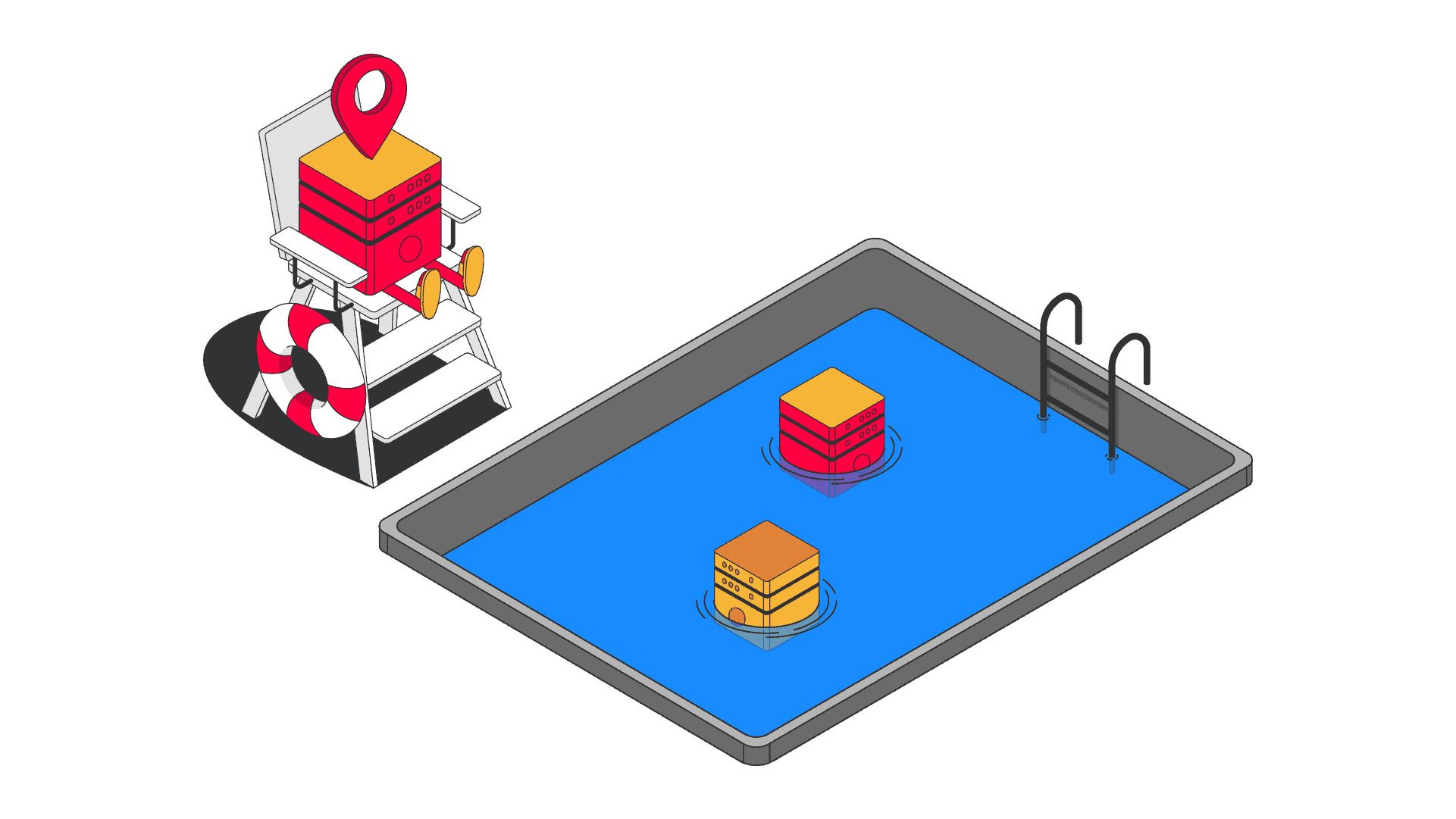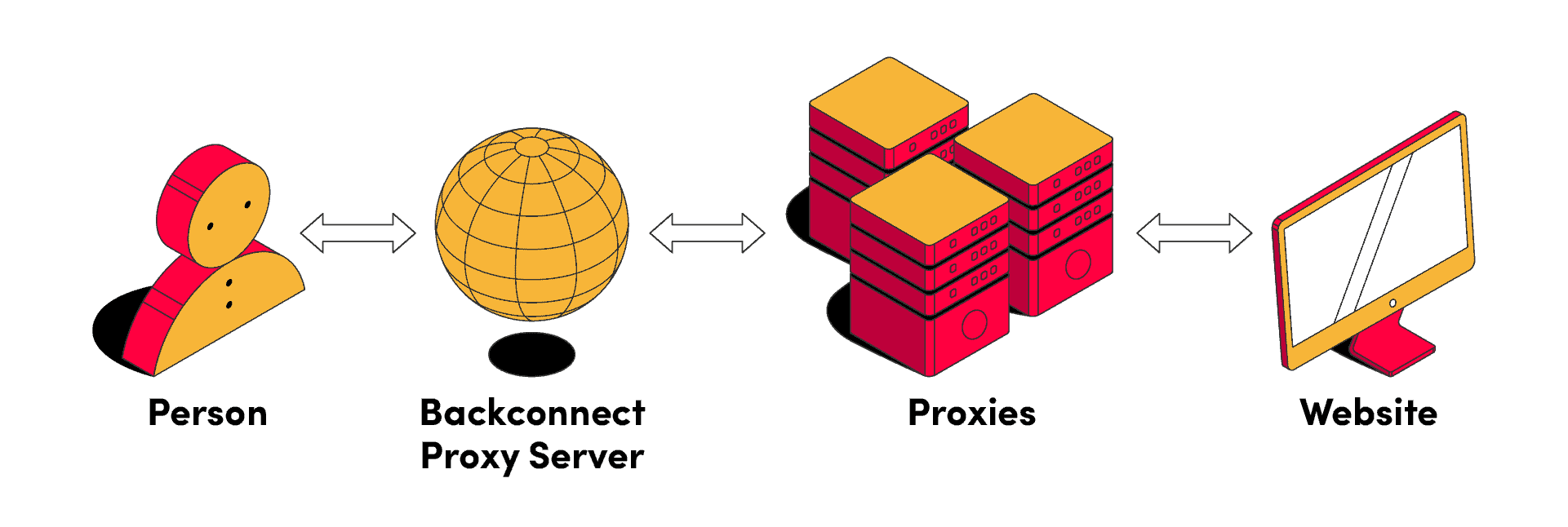What Are Backconnect Proxies? A Practical Guide
By giving you access to a pool of IP addresses, backconnect proxies simplify proxy management for any large scale project. They also make an inseparable part of rotating proxy networks. This article will teach you more about backconnect proxy servers: their features, working principles, and how they compare to regular proxy lists.

What Is a Backconnect Proxy Server?
Proxy servers are little more than remote computers that let you use their IP address and location instead of your own. They’re indispensable for automation, accessing geo-restricted websites, caching content, and many other purposes.
For many years, you’d connect to a proxy server directly. Even today, it isn’t rare to find free proxy lists online, or get a list of IPs if you buy dedicated proxies.
While useful, the lists were pretty burdensome to manage for web scraping and other projects that required IP rotation. In addition, residential proxies appeared. These IP addresses relied on unstable connections of end users rather than servers, which made direct access unreasonable.
So, vendors came up with something called a backconnect proxy server. It’s a gateway that links you to a provider’s proxy pool. Instead of receiving a list of IPs directly, you rather connect to the server, and it fetches them for you. This extra step makes backconnect proxy servers managed, while regular proxy lists are unmanaged by the provider.
How Backconnect Proxies Work
Backconnect proxies connect you to a proxy provider’s load balancing server, which ideally sits close to you. The server then selects an IP address that meets your requirements from a pool of available proxies.
The gateway never changes, even when the IPs behind it do. As a result, you can use multiple IPs through one address without managing them yourself – everything is done in the backend.

How do you actually use such a server, then? Backconnect proxies usually come in the hostname:port format, such as: en.proxyprovider.com:10000:username:password.
Depending on the provider, you can manipulate the address to change the server’s parameters. For example, changing the port number can give you IPs from different locations, or you can add information to the username to change the rotation settings.
Proxy providers like Zyte and Oxylabs outfit their servers with even more advanced features: request throttling, intelligent proxy rotation, and so on. These tools are no longer proxies but rather remote scrapers that integrate as proxy servers. They’re often called unblockers.
Due to the logistics involved, most backconnect proxy pools are shared between users. That said, it may be possible for demanding clients to receive dedicated backconnect proxy pools, or at least use a proxy alone while they’re connected to it.
Backconnect Proxy Types
I’ve mentioned backconnect proxies in association with residential IPs. This might have raised a question: can any proxy type use the backconnect format? Short answer – yes: it’s a matter of server setup, not IP source.
That said, certain types find themselves in the backconnect format more often than others. It’s inevitable with rotating residential proxies, as well as with mobile addresses (same IP source – devices of end users).
The situation is different with datacenter and ISP proxies. They have the ability to either rotate or remain static, in the form of an IP list. For example, Webshare’s backconnect proxies come as an option which you can enable on the dashboard.
Whether you want that depends on your goals. You can read more in our guide on rotating vs static proxies.
Rotating Backconnect Proxies vs Proxy Lists
Benefits of backconnect proxies:
- They enable the use of residential and mobile proxy addresses.
- They make proxy management easier with automatic rotation and extra features.
- They allow making adjustments after you’ve bought access to proxy IPs (such as changing locations).
- The give you access to a much larger IP pool. This means better scaling, less maintenance, and if you get a bad IP, you can simply rotate it away.
Drawbacks compared to proxy lists:
- Backconnect proxy pools are usually shared, so you don’t know what IP you’ll get.
- They tend to charge by traffic. In other words, you’re paying for the bandwidth you use and not individual IPs. This can rack up quite a bill.
- They necessarily rotate. While many providers let you create sticky sessions, 10 or even 30 minutes may not be enough for certain use cases.
Conclusion
So, these were backconnect proxies. With simple proxy management, great scaling, and value-added features, backconnect proxy servers have become a superior option for many use cases traditionally covered by proxy lists.

Frequently Asked Questions About Backconnect Proxies
No. Datacenter proxies can use backconnect servers as well. Smartproxy and Luminati are a few examples of providers offering backconnect datacenter IPs.
Usually, these proxies have automatic rotation set up. Most major providers let you modify rotation settings: make it every request or after some period of time (5-30 minutes).
Not necessarily. But they make proxy management easier and let you use proxies at a larger scale.